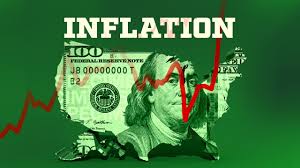MarketWatch
The numbers: The cost of living rose a relatively modest 0.4% in October, suggesting inflationary pressures are waning more rapidly.
Economists polled by The Wall Street Journal had forecast a 0.6% increase in the consumer price index.
The smaller-than-expected rise in inflation gave a huge boost to stocks in premarket trades. Interest rates also fell.
Wall Street investors hope a slowdown in inflation will allow the Federal Reserve to ease back the throttle on a rapid series of interest-rate hikes that are slowing the economy.
The yearly rate of inflation slipped to 7.7% from 8.2%, marking the lowest level since January. Inflation had peaked at a nearly 41-year high of 9.1% in June.
In another positive sign, the so-called core rate of inflation that omits food and energy rose just 0.3%. Wall Street had forecast a 0.5% gain.
The increase in the core rate over the past year slipped to 6.3% from a 40-year peak of 6.6% in the prior month.
The Fed views the core rate as a more accurate measure of future inflation trends.
Key details: The cost of gasoline rose for the first time in three months. The OPEC oil cartel cut production and prices have moved higher again.
The cost of groceries also increased 0.4% and are up 12.4% in the past year. That’s the fastest increase since 1979.
Rents jumped 0.7% in October. Rents have risen 7.5% in the past year, marking the biggest gain since 1982.
On the other side of the ledger, the cost of medical care sank 0.5% last month after a recent runup. Much of the decline reflected government revisions after it was found that the cost of health insurance didn’t rise as much as previously reported.
Medical costs have risen a sharp 5% in the past year, however.
The cost of used cars, meanwhile, fell for the fourth month in a row. Prices also declined for clothing and airfare.
Inflation-adjusted wages dipped 0.1% in October. Real wages have dropped 2.3% in the past year because of high inflation. Households have to spend more — and draw down their savings — to maintain the same standard of living.
Big picture: A surge in inflation to a four-decade high over the summer is slowing, but not fast enough for the Fed. The central bank worries inflation will become entrenched in the economy unless it’s brought to heel soon.
Yet the Fed’s main tool to squelch inflation — higher interest rates — also threatens to slow the economy to a crawl or even plunge it into recession. The bank has jacked up a key short-term rate to a top range of 4% from near zero in the spring.
Senior Fed officials are expected to raise interest rates again at their next meeting in December, but it’s unclear how much. They will see another CPI report ahead of their decision and that could sway how far they go.
Looking ahead: “This is a positive sign that inflationary pressures are starting to come off the boil,” said Cailin Birch, global economist at the Economist Intelligence Unit . “However, this is only a minor slowdown in year-on-year inflation, and several months of such declines will be necessary before the Fed considers pausing its tightening cycle.”














